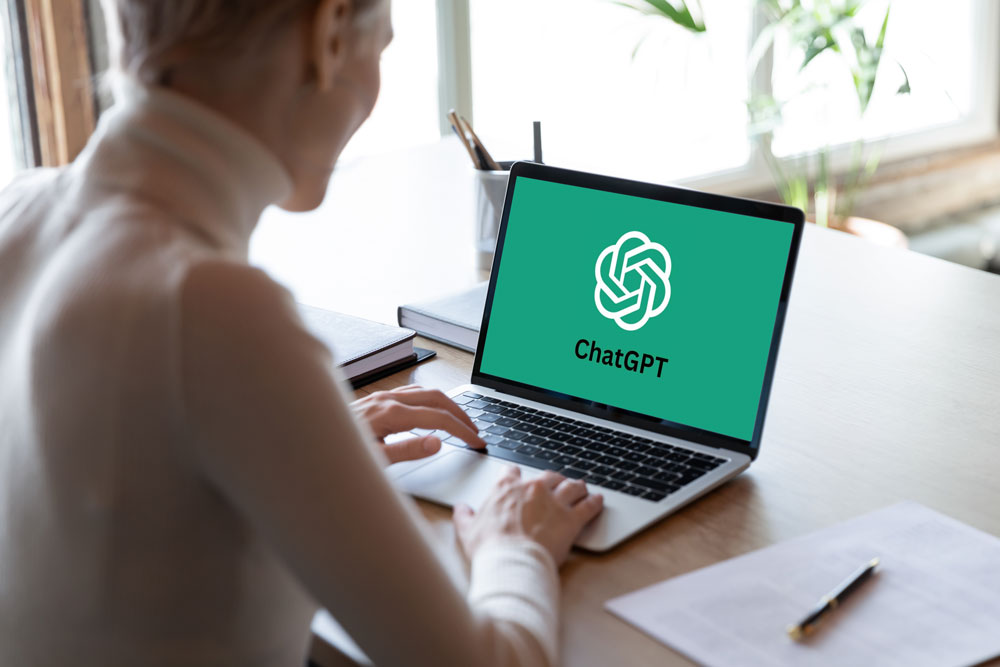Listen to This Blog
It seems to me that not a day goes by without ChatGPT appearing in a news headline.
From fears of it replacing workers to raves about its productivity benefits, the artificial intelligence (AI) tool is being hailed in the headlines as the biggest technological advancement since the invention of the personal computer several decades ago.
Microsoft co-founder Bill Gates called AI “revolutionary” in a recent blog post. “The development of AI is as fundamental as the creation of the microprocessor, the personal computer, the Internet, and the mobile phone,” he writes. “It will change the way people work, learn, travel, get health care, and communicate with each other. Entire industries will reorient around it. Businesses will distinguish themselves by how well they use it.”
With those daunting possibilities in mind, we recently brainstormed some potential applications for ChatGPT here at All Star Incentive Marketing and came up with several promising uses.
Employee recognition: With its content-creating capabilities, it can potentially be used to generate personalized messaging such as welcoming onboarding employees, celebrating service anniversaries and retirements, recognition for successfully completing a project, and special thanks for those “above and beyond” moments.
In a customer loyalty role, ChatGPT might be used to welcome new customers, thanking them regularly for their business, and rewarding them with special sales and other promotional events.
Taking it a step further, it can potentially be applied to generating an automatic rewards process, using AI to select and deliver recipients’ rewards of choice.
Marta Turba, vice president of content strategy at WorldatWork, says “ChatGPT offers a game-changing opportunity for rewards professionals by streamlining foundational tasks such as communications, presentations and planning. The real advantage is that AI has the power to free up valuable time for higher level work, enabling us to focus on strategic decision making and program design. Ultimately, this tool may help elevate the role of HR and rewards in the organization.”
But there are limitations to what ChatGPT can accomplish in the rewards and recognition space, according to Michael Piker, global reward director at Flutter Entertainment, Plc. “If you’re trying to create an end-to-end incentive plan design, that would be a stretch,” Piker added. “But can it give you context and content to design a plan? Absolutely. Can it execute a plan design? Probably not.”
Given the nature of machine learning technology, ChatGPT will become more proficient over time as more inputs occur, which expands its capabilities. This, Piker said, could disrupt traditional reward roles within organizations.
For example, it could potentially reduce the need for transactional rewards roles, resulting in only the most senior level incentive design being done in house by a person, Piker said.
In the more immediate future, however, Turba emphasizes that humans should still be responsible for innovating and designing rewards.
“ChatGPT is a valuable asset for professionals, but it’s important to note that it supplements human decision-making, it doesn’t replace it,” she said. “While technology may support and enhance decision-making processes, it’s not yet advanced enough to drive all decisions. The ‘H’ in HR remains essential.”
But overall, we envision AI technology can be used to streamline many recognition and reward functions.
As the recognition/rewards platform gathers information about how participants engage with a program, AI can be used to better predict what features each person may find most engaging and what types of awards they find most compelling. Using this information, an AI driven platform can be more prescriptive in which aspects of the program it promotes, and which awards it highlights to each participant. By doing so, it will strengthen participant engagement and create a more successful program.
Using a safety recognition/rewards program as an example, AI can be used to evaluate all trackable activity by participants (accidents/injuries/violations, quiz scores, absenteeism, behavior-based observations, proper use of PPE, etc.), along with participant demographics and job functions, and make predictions about where future incidents are most likely to take place. By doing so, it can steer problem mitigating program features towards specific program participants where improvements are most likely.






0 Comments